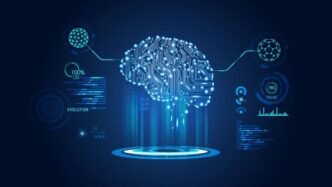Natural Language Processing (NLP) stands at the forefront of artificial intelligence (AI), enabling machines to comprehend, interpret, and generate human language. By bridging the gap between human communication and computer understanding, NLP transforms how we interact with technology, making it more intuitive and seamless.
What is Natural Language Processing?
Natural Language Processing is a subfield of AI focused on the interaction between computers and human (natural) languages. It encompasses a range of techniques and algorithms that allow machines to process and analyze large amounts of natural language data. The primary goal of NLP is to enable computers to understand the nuances, context, and intent behind human language, facilitating more meaningful and effective communication.
Key Components of NLP
NLP involves several critical components that work together to process and understand language:
- Tokenization: Breaking down text into smaller units like words or phrases.
- Part-of-Speech Tagging: Identifying the grammatical parts of each word (nouns, verbs, adjectives, etc.).
- Named Entity Recognition (NER): Detecting and classifying entities such as names, dates, and locations.
- Sentiment Analysis: Determining the emotional tone behind a piece of text.
- Machine Translation: Translating text from one language to another.
- Text Summarization: Condensing long texts into shorter summaries while retaining key information.
Applications of NLP
NLP has a wide array of applications across various industries, revolutionizing how businesses operate and interact with customers. Some prominent applications include:
- Virtual Assistants: Tools like Siri, Alexa, and Google Assistant use NLP to understand and respond to user queries.
- Customer Service: Chatbots handle customer inquiries, providing quick and efficient support.
- Healthcare: NLP assists in processing medical records, facilitating better patient care and research.
- Finance: Analyzing market sentiments and automating report generation.
- Education: Enhancing language learning tools and automating grading systems.
- Content Creation: Generating articles, summaries, and even creative writing pieces.
Statistical Insights
- Market Growth: The global NLP market is projected to reach $43.3 billion by 2025, growing at a CAGR of 21.0% from 2020 to 2025. (Source)
- Adoption Rate: Approximately 80% of enterprises are expected to adopt NLP technologies by 2023 to enhance customer experience and operational efficiency.
- Accuracy Improvement: Advances in deep learning have improved the accuracy of NLP models by over 15% in the past five years.
Recent Advances and Statistics
The field of NLP has seen significant advancements, particularly with the advent of deep learning and transformer-based models like GPT-4. These models have dramatically improved the ability of machines to understand context, manage ambiguity, and generate coherent and contextually relevant text.
Table: Comparison of Leading NLP Models
| Model | Developer | Year Released | Key Features | Applications |
|---|---|---|---|---|
| GPT-4 | OpenAI | 2023 | Advanced language understanding, text generation | Chatbots, content creation, translation |
| BERT | 2019 | Bidirectional training, contextual understanding | Search engines, sentiment analysis | |
| RoBERTa | 2019 | Enhanced training techniques, robust performance | Text classification, question answering | |
| T5 | 2020 | Text-to-text framework, versatile tasks | Translation, summarization, QA | |
| XLNet | Google/CMU | 2019 | Permutation-based training, better context capture | Language modeling, text generation |
Challenges and Future of NLP
Despite significant progress, NLP faces several challenges that researchers and practitioners are actively working to overcome:
- Ambiguity in Language: Human language is often ambiguous and context-dependent, making it difficult for machines to interpret accurately.
- Sarcasm and Irony Detection: Understanding the subtle nuances of sarcasm and irony remains a complex task for NLP systems.
- Resource Limitations: High-quality annotated data is essential for training effective NLP models, but such resources are scarce for many languages.
- Bias and Fairness: NLP models can inadvertently learn and propagate biases present in training data, leading to fairness and ethical concerns.
- Real-time Processing: Achieving real-time language understanding and generation, especially in low-resource environments, is still challenging.
Future Directions
The future of NLP is poised to address these challenges through:
- Multimodal NLP: Integrating text with other data types like images and audio to enhance understanding.
- Low-resource Language Processing: Developing techniques to support languages with limited data availability.
- Explainable AI: Creating models that provide transparent and interpretable decision-making processes.
- Ethical NLP: Ensuring models are fair, unbiased, and respect user privacy and data security.
- Enhanced Contextual Understanding: Building models that better grasp long-term dependencies and broader context in conversations.
Conclusion
Natural Language Processing is a transformative technology that bridges the gap between human communication and machine understanding. With applications spanning various industries, NLP enhances efficiency, accessibility, and user experience. While challenges remain, ongoing research and advancements promise a future where AI can seamlessly understand and generate human language, opening up new possibilities for innovation and interaction.
For a deeper dive into the fundamentals and advancements in NLP, visit the Wikipedia page on Natural LanguageProcessing.
Key Takeaways:
- NLP enables machines to understand and generate human language through techniques like tokenization, sentiment analysis, and machine translation.
- Applications of NLP are vast, including virtual assistants, customer service chatbots, healthcare data processing, and more.
- Market Growth for NLP is substantial, with projections reaching $43.3 billion by 2025.
- Leading NLP Models like GPT-4, BERT, and RoBERTa have set new standards in language understanding and generation.
- Challenges such as language ambiguity, bias, and real-time processing continue to drive research and innovation in the field.
Statistics Highlighted:
- 80% enterprise adoption of NLP technologies by 2023.
- 15% accuracy improvement in NLP models over the past five years.
- NLP market value expected to reach $43.3 billion by 2025.
By understanding and harnessing the power of NLP, businesses and individuals can unlock new levels of communication, efficiency, and innovation, shaping the future of human-computer interaction.













